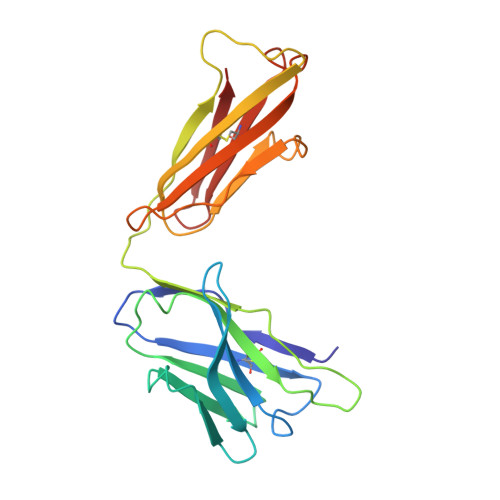Structural basis for antibody catalysis of a disfavored ring closure reaction.
Gruber, K., Zhou, B., Houk, K.N., Lerner, R.A., Shevlin, C.G., Wilson, I.A.(1999) Biochemistry 38: 7062-7074
- PubMed: 10353817
- DOI: https://doi.org/10.1021/bi990210s
- Primary Citation of Related Structures:
25C8, 35C8 - PubMed Abstract:
The catalysis of disfavored chemical reactions, especially those with no known natural enzyme counterparts, is one of the most promising achievements of catalytic antibody research. Antibodies 5C8, 14B9, 17F6, and 26D9, elicited by two different transition-state analogues, catalyze disfavored endo-tet cyclization reactions of trans-epoxy alcohols, in formal violation of Baldwin's rules for ring closure. Thus far, neither chemical nor enzyme catalysis has been capable of emulating the extraordinary activity and specificity of these antibodies. X-ray structures of two complexes of Fab 5C8 with the original hapten and with an inhibitor have been determined to 2.0 A resolution. The Fab structure has an active site that contains a putative catalytic diad, consisting of AspH95 and HisL89, capable of general acid/base catalysis. The stabilization of a positive charge that develops along the reaction coordinate appears to be an important factor for rate enhancement and for directing the reaction along the otherwise disfavored pathway. Sequence analysis of the four catalytic antibodies, as well as four inactive antibodies that strongly bind the transition-state analogues, suggests a conserved catalytic mechanism. The occurrence of the putative base HisL89 in all active antibodies, its absence in three out of the four analyzed inactive antibodies, and the rarity of a histidine at this position in immunoglobulins support an important catalytic role for this residue.
Organizational Affiliation:
Department of Molecular Biology and Chemistry, Skaggs Institute for Chemical Biology, The Scripps Research Institute, La Jolla, California 92037, USA.
















